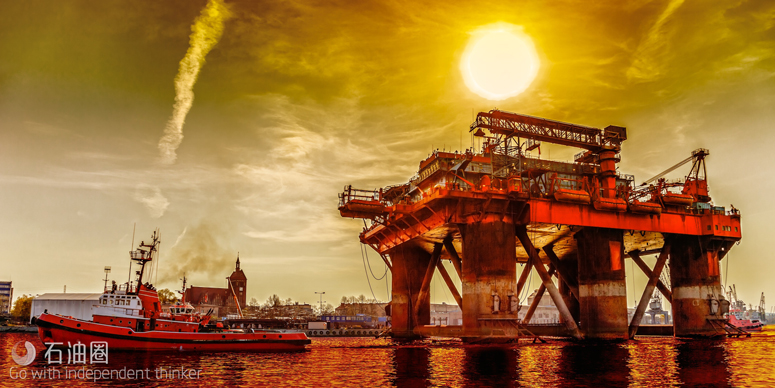ExxonMobil is making great strides forward in the Stabroek block. Now the government wants more majors to join the rush to develop the country’s offshore resources, writes Ryan Stevenson
The biggest exploration and production story in Latin America over the past 18 months has been the emergence of Guyana’s offshore as a highly prospective play.
Most of the focus to date has been on the country’s offshore oil reserves, with an ExxonMobil-led consortium uncovering resources via its Liza, Payara and Snoek finds in the Stabroek block. But there has not been much focus thus far on natural gas and how associated gas produced during drilling for oil might be monetised.
Flaring up
Jan Mangal, who was recently appointed petroleum adviser to Guyanese President David Granger, told NewsBase Intelligence (NBI) that discussions were progressing on what should be done with the gas that is produced in the play.
“Up until July last year, the plan was to flare the gas, which is unacceptable to most people in the industry,” Mangal said. “Even in countries that flared most of their gas in the past, such as in Nigeria and Angola, it is doubtful [that] flaring would be acceptable on new projects.”
With flaring rejected as an option, two alternatives were mooted: re-injection or piping the gas to shore, Mangal said. “The next assumption was that all of the gas would be re-injected. Then earlier this year, gas-to-shore was discussed as a real possibility, but with the majority of gas production still being re-injected. These discussions are preliminary, and no decision has yet been made around gas-to-shore.”
Piping gas to the Guyana’s coast could have a transformative effect on the country’s economic prospects, aside from the anticipated windfall from the oil boom.
“If gas is brought to shore via a pipeline, it is likely it would feed a new power plant,” Mangal said. “The preliminary numbers are rather small, about 30-50 mmcf [0.85-1.4 mcm] per day through an 8-12 inch [203-305 mm] pipeline. But none of that is decided yet, and the studies by ExxonMobil are still on going.”
If an initial gas flow in the range outlined by the petroleum adviser were to materialise, it could feed a new 200-MW gas-fired thermal power plant (TPP). This is roughly similar to the current installed capacity in Guyana, which currently generates electricity by burning dirty and expensive fuel oil.
“But developing a gas to power solution will not be a simple project in Guyana, even if foreign partners handled the gas-to-shore aspect [the offshore pipeline],” Mangal said. He noted that the country’s whole electricity distribution system is old and inefficient and that “much needs to be done in preparation for any new power plant, whether it’s hydro or gas.”
Building a 200-MW TPP would be a bigger project than anything Guyana has had to contend with in the past and it is unlikely the government could handle it right now. With this in mind, Mangal said that: “If it goes ahead, it might be prudent to consider a Build Operate Transfer [BOT] model, or similar [option], to get it done within budget and on time.”
He added that the contract should be managed by a foreign independent entity, perhaps the Inter-American Development Bank (IADB) or a similar body. This, he argued, would keep “the government out of the operational aspects of the capital project, would reduce the risk of corruption and increase the chance of a successful outcome.”
This is a sensible approach, and while bringing the gas ashore would clearly bring many economic benefits to Guyana, it would also come with myriad challenges.
What could prove to be a game changer, however, would be a bigger gas find in the offshore area. “In that circumstance, the scenario could change completely. There could be a larger pipeline to shore or a floating LNG [FLNG] installation, and Guyana would have to consider exporting gas,” Mangal said. “If the gas comes to shore in Guyana, Brazil and other neighbouring countries could be a market. But right now, that’s not the case, because there is not a huge amount of gas.”
As well as a relative lack of gas at present, ExxonMobil and its partners would also need to be assured of the commercial viability of any plans to monetise the gas, and talks on this aspect are continuing.
Services support
Turning to the emerging oil industry, Saipem recently announced it had won a new engineering, procurement, construction and installation (EPCI) contract to help develop the Liza field.
The company said it wanted to “be among the first operators” working in Guyana’s emerging services sector.
Mangal said the emergence of a local services base was still at an embryonic stage. “ExxonMobil is in the process of setting up a supply base on the Demerara River in Georgetown to support the drilling and completion [D&C] campaign for Liza Phase 1, which is about 17 wells. This already should include, or at least attract, D&C service companies to Guyana.”
With the emergence of a services industry comes consideration of local content requirements, and the government is already looking into this aspect.
“The Ministry of Natural Resources [MNR] last year received advice on hydrocarbon regulatory frameworks from a consultant [called Anthony Paul] and I believe they are drafting a local content policy,” Mangal stated.
He also noted that there were other factors to consider in respect of the development of a larger oil and gas supply industry in Guyana, as opposed to ExxonMobil’s base on the Demerara River.
“A larger oil and gas supply base would be the first deepwater port in Guyana that would likely have to serve other purposes in addition to the hydrocarbons industry,” he said. “The decision on a future deepwater port will be influenced by the needs of: general shipping and other industries in Guyana; onshore transportation links; the location of possible gas-to-power facility and industrial zone; etc.”
Mangal suggested that a positive first step would be for a comprehensive feasibility study to be carried out by a reputable engineering firm, which considers all the drivers, though he said such a company “should be one which is not influenced by special interests who may already own land, etc.”
He also took care to note that the Guyanese government has time on its hands. “We have Liza Phase 1 and Phase 2. Payara and Snoek might be stand-alone or tie-in. Exxon’s supply base in the Demerara River will handle their needs for the next three to five years. And we know how existing supply bases tend to grow over time. So I do not believe there is any need to rush.”
Output outlook
As exploration work speeds up, with Exxon extending its search and with 3D seismic work under way at the Orinduik and Kanuku licences, some optimistic forecasts have put the country’s peak output at around 450,000 bpd sometime during the next decade.
Mangal said this sounded more like a P90 estimate based on his current information and that Exxon would have more recent data, though he added: “Liza Phase 1 probably will peak at 100,000 bpd. Then if we add a second FPSO for Liza Phase 2 and even a third vessel, then we might start to approach the number you mention.”
In order to achieve such an ambitious output target, the regulatory environment in the country will have to evolve positively to retain the interest of current participants and draw in new ones.
Assessing the changes that might take effect, Mangal said: “It is a given that terms should change after a major discovery such as Liza-1. This is common practice around the world. We have to make sure that post-Liza-1 contracts for Guyana’s resources can stand-up when benchmarked against current contracts in other countries.”
He was adamant that a new approach to the award of acreage should also come into play as quickly as possible.
“Guyana needs immediately to stop conducting one-on-one negotiations in awarding acreage, and institute a transparent system of competitive bidding,” he stated. Mangal added that the government was lucky to have secured Exxon as a partner from the outset, but that it wanted more big names to take up positions too.
“There are large blocks adjacent to the Stabroek block that were leased by small, little known companies, and now Exxon has farmed in to some of those blocks,” he noted. “Guyana is lucky to have Exxon as our partner at this critical stage in the development of our oil and gas industry. Exxon sets a high bar with respect to its technical work and its safety performance, and also has a reputation to maintain. But we all know that countries benefit from competition between the majors, and it is not in Guyana’s long term interest to have most of its acreage operated by one or a couple companies. Guyana now needs to attract the likes of Chevron, Royal Dutch Shell, Total, etc.”
The rapid move from exploration towards production should ensure interest remains strong, and the arrival of one of those companies would mark the next stage of the country’s offshore story.


 石油圈
石油圈
